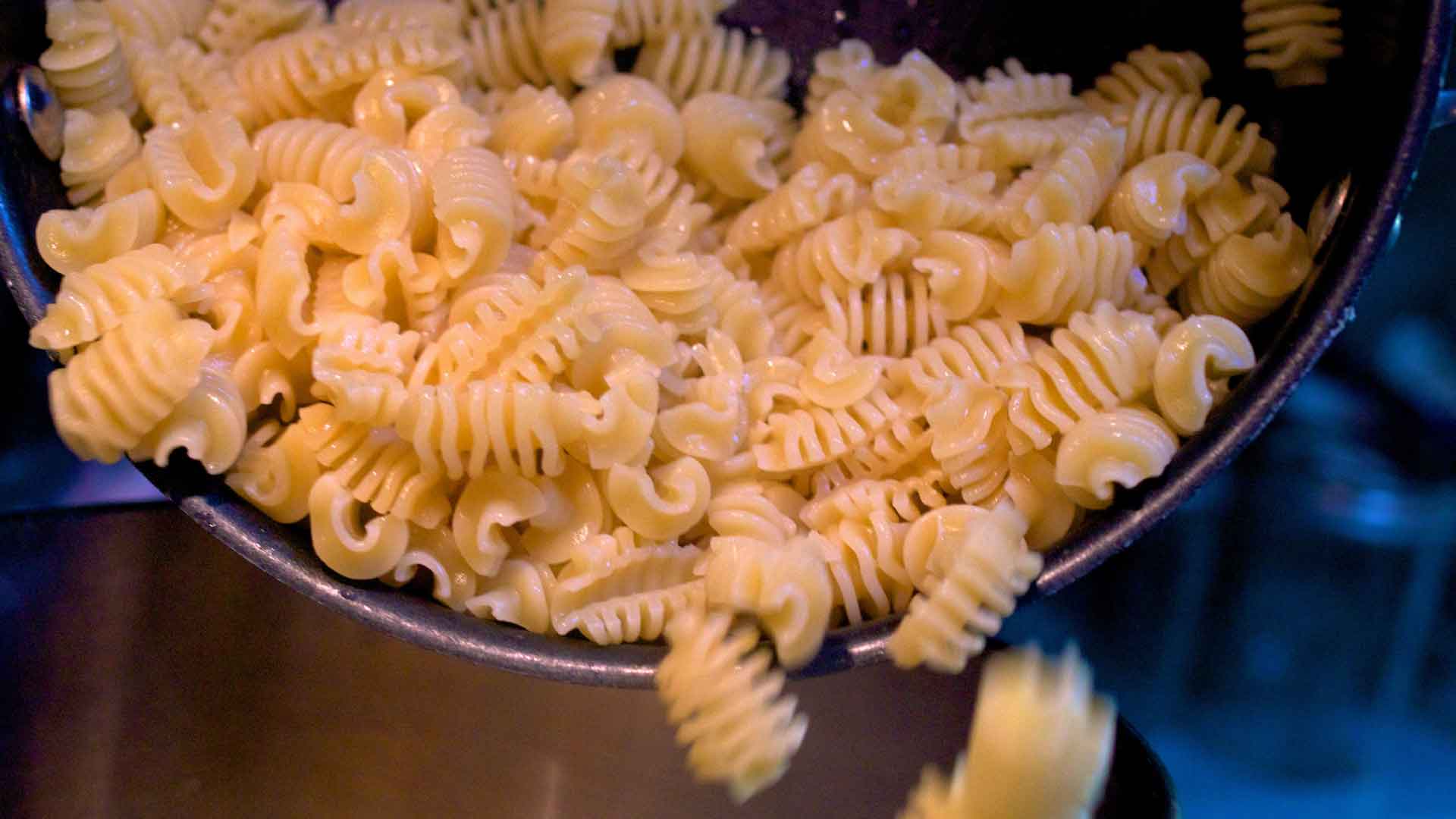Today, we’re bringing you the first of our Italian blog posts, and where better place to start than with a staple of Italian cuisine and culture: pasta! Far from being just an ingredient kept at the back of the cupboard, in Italy, pasta is so cherished that wheat often has to be imported in from other countries to keep up with Italians’ pasta-making demands! In this article, we have taken five common varieties of pasta and researched the origins of their names, which will not only help you find out more about the famous foodstuff, but will help improve your Italian vocabulary. We hope you enjoy this delicious learning experience, and that it takes you on a journey from “pasta imposter” to “pasta pro”! All that’s left to say now is buon appetito!
To get started, let’s have a look at the origin of the word ‘pasta’ itself. The English word ‘pasta’ was, of course, adopted from Italian, in which pasta also means ‘dough’. Looking further back, the word also derives from the Greek word παστά (pasta), strangely meaning ‘barley porridge’.
1) Conchiglie
 Picture: Jameson Fink (Creative Commons 2.0)
Picture: Jameson Fink (Creative Commons 2.0)
The first pasta on our list is conchiglie. In English, a conch is a type of spiral-shaped seashell, and that’s exactly where the name for this shell-shaped pasta comes from. In Italian, the word for ‘seashell’ is conchiglia.
This pasta is traditionally made from durum wheat, and can be coloured with spinach, tomato or squid to produce green, red or black shades. There are many other pastas – like lumaconi – which have a similar shell-like form to conchiglie, and are large enough to be stuffed with delicious fillings and baked in the oven.
conchiglia (f) – seashell
lumaconi (m/pl) – slugs / large snails
Hai fame? Hungry yet? Take a look at this delicious recipe featuring conchiglie. In this easy-to-follow recipe, the shell-shaped pasta is stuffed with buffalo mozzarella, fresh basil leaves and homemade tomato sauce – three pillars of Italian cuisine.
2) Farfalle
 Picture: eltpics (Creative Commons 2.0)
Picture: eltpics (Creative Commons 2.0)
Instantly recognisable as bow tie shapes, farfalle are a true crowd-pleaser. However, the translation has nothing to do with bow ties. Can you guess the meaning of the word farfalle? In Italian, una farfalla is a butterfly, and farfalle is the plural form. Farfalle are best served with rich cheese or tomato-based sauces due to their large surface area, which takes on all of the flavour from the sauce.
There is also a mini version of farfalle, called farfalline, which is often stirred into soups.
farfalle (f/pl) – butterflies
We’ve found another mouth-watering recipe for you to try out: a healthy recipe which puts a slightly different spin on the classic pasta dish. Vorresti assaggiarlo tu? Perfect for summertime dinners or light lunches, this pasta salad can be whipped up in just half an hour!
3) Radiatori
 Picture: Dave Prasad (Creative Commons 2.0)
Picture: Dave Prasad (Creative Commons 2.0)
The third pasta we’ve chosen, and perhaps the easiest to work out the etymology of, is radiatori. This ruffle-edged pasta is relatively new to the scene: introduced in the 1960’s, radiatori are medium-sized pasta shapes which are a popular choice for casseroles and other baked dishes. The literal translation of radiatori is – unsurprisingly – ‘radiators’, which is exactly what this pasta looks like: little radiators!
radiatore (m) – radiator
This third recipe is written in Italian, which will give you a chance to practise your food-related vocabulary, while trying your hand at this mushroom and crunchy pancetta radiatori dish. Serve this with a good glug of extra virgin olive oil and you’ll be good to go!
4) Tagliatelle
 Picture: Jason Hamner (Creative Commons 2.0)
Picture: Jason Hamner (Creative Commons 2.0)
This versatile pasta – often eaten with creamy or meaty sauces – is probably the most well-known on our list. But what is the origin of the word tagliatelle? Its name comes from a verb which translates as ‘to slice’ or ‘to cut’: tagliare. So, tagliatelle literally means ‘small slices’, perfectly describing the long strips of this ribbon-like pasta!
tagliare (vb) – to cut / to slice
taglio (m) – cut / slice
Although most would associate spaghetti with bolognese sauce, it is tagliatelli which most frequently accompanies an authentic bolognese sauce in Italy. Cosa aspetti? Try making your own Tagliatelle Bolognese using this recipe.
5) Rotelle
 Picture: cookbookman (Creative Commons 2.0)
Picture: cookbookman (Creative Commons 2.0)
Taken from the word rotella, meaning ‘little wheel’ or ‘cogwheel’, this pasta is often referred to as ‘wagon wheel’ pasta in the U.S. Similar to the flower-shaped fiori pasta, the large surface area of rotelle, provided by their ‘spokes’, means that they take on extra flavour when added to any sauce!
rotelle (f/pl) – little wheels
rotare (vb) – to rotate
fiore (m) – flower
To finish, we have another recipe in Italian for you. Follow this step-by-step guide to create a tasty Italian sausage sauce – the perfect compliment to this ‘wagon wheel’ pasta.


